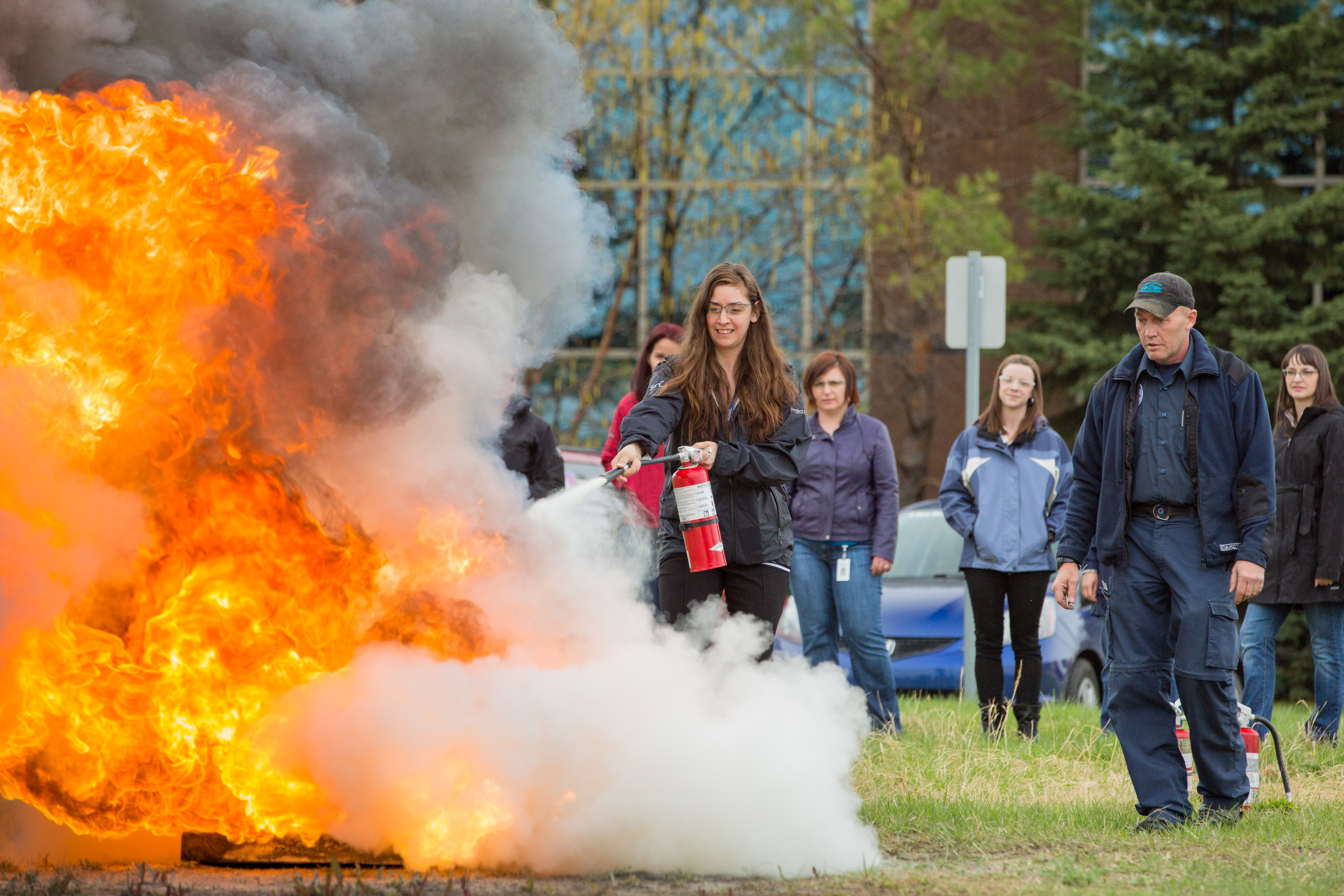North American Occupational Safety and Health (NAOSH) Week provides a valuable opportunity to talk about safety in terms of organizational culture and engagement. Every year, we offer a variety of NAOSH Week activities, such as nutrition breaks and fire extinguisher training, for all our employees to participate in. Our goal is to foster a high level of participation, while increasing the awareness of health and safety throughout the company – but we don’t just do it during NAOSH Week. We follow through on our safety commitments every single day. 
Our lost-time injury (LTI) rate this past fiscal year was zero - not a single employee required time off as a result of a safety incident at work. According to the CEO of the Worker’s Compensation Board, the provincial LTI was 2.07 in 2015. It’s because of our safety program, and our employees’ active participation in the program, that our LTI is at zero. There are several key steps that we’ve taken to encourage participation and continuous improvement in our safety program.
Leadership, Commitment, and Feedback
Safety is a continuous journey and it definitely doesn’t evolve overnight. Leadership and commitment are absolutely essential in establishing a strong culture of safety within any organization. When organizational leaders promote safety and lead by example, they set the tone for how employees at all levels perceive safety.
Realistically speaking, workers complying with rules and procedures are customers for the safety systems in place. By seeking their feedback, we learn if these systems are effective, cumbersome or whether they can be improved. Reciprocity is the key to creating this open feedback environment, for an employee who shares a safety concern should be heard and feel confident that their superiors will act accordingly. Otherwise, what’s the point or incentive for a worker to offer constructive input? Positive-reinforcement helps get “buy-in” from workers. With strong leadership and commitment, employees will communicate upwards and begin the process of alleviating safety concerns and challenges.
Focusing on Prevention
Front-line employees can help identify the reasons why an unsafe act or condition exists. The key tools to use here are observation and feedback systems. We’re about to launch a software application, Safety: Prevention by Observation Tool (SPOT), which is used by our employees to identify, report and address unsafe acts and conditions before incidents occur. SPOT is user-friendly, easily accessible and timely (unlike filling out three page, paper reports).
We focus on prevention to make improvements in behaviours, processes and the working environment. Proactive isn’t just a buzz word at SRC - we truly stand by it. It’s not about working around complications, but actually assessing work-space conditions and eliminating potential hazards before they can pose a substantial risk.
For example, in 2012, we improved the air quality for our employees who prepare mineral samples (in a very dusty environment) by installing a new, more effective dust collector air filtration unit. Going above and beyond to protect employees and reduce their exposure to health hazards was and continues to be, a top priority.
Employee Engagement
While observing and identifying problems is extremely important, the next step is exploring these obstacles, challenging the status-quo and forming solutions. What better way to accomplish this than to include the workers operating the equipment, carrying out services and working the systems? Typically, people feel more supportive of change when they’ve contributed input that is reflected in the process.
We have an initiative in place to develop our employees as ‘safety champions.’ We rotate employees from their traditional roles into a temporary position within our Safety Services group, so that they can become proficient in conducting safety inspections and internal audits. Upon resuming their traditional roles, these employees can apply and promote their knowledge, resulting in a safe and empowered workforce.
Looking Forward
A successful safety program is the result of continuous improvements that begin with visible, top-down endorsement from leaders. In our experience, employees observe this and adopt a proactive attitude towards safety and engage in meaningful discussions about best practices and reporting mechanisms.
NAOSH Week provides an opportunity to celebrate and spread awareness about safety – but safety is a topic that should be visited daily. Everyone has a shared responsibility to be involved in creating effective solutions to make work a safe, healthy and happy place.
Related Post: Real-World Safety Stories from the Lab Floor: Take Charge of Your Safety
This blog post was written by Andrew Downing, a former SRC employee.
